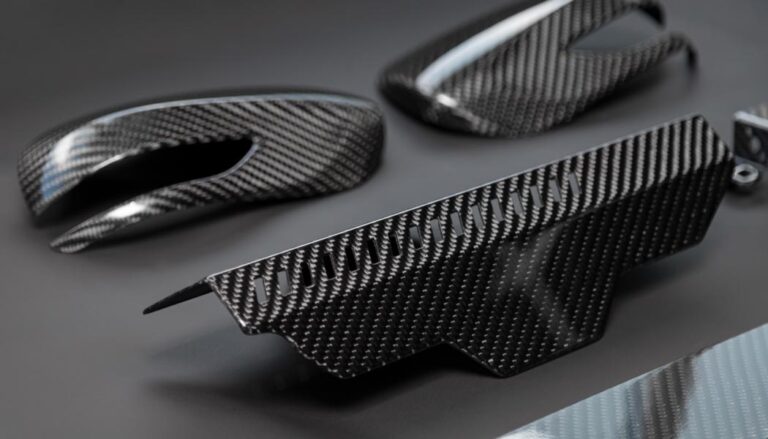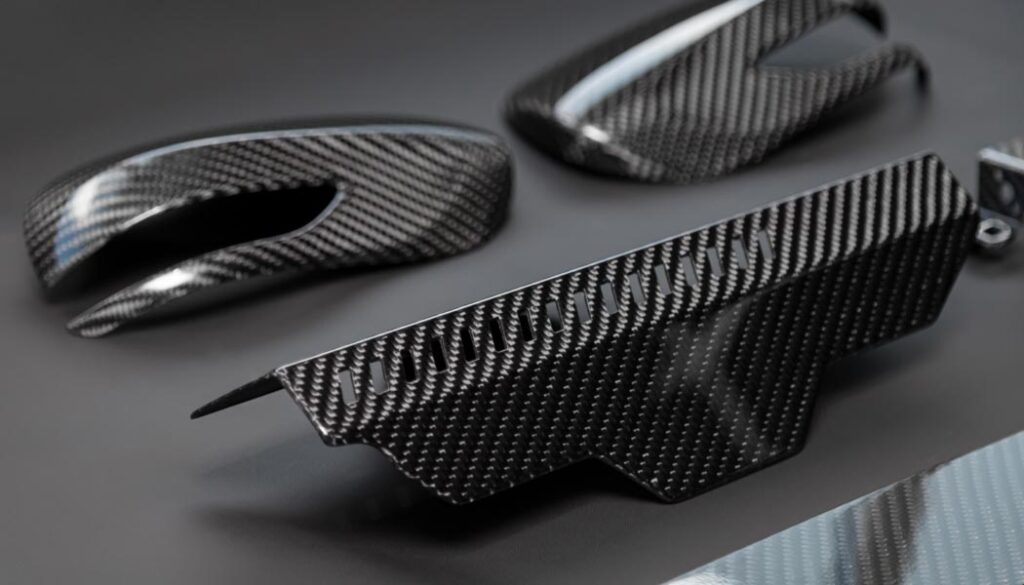
A Comprehensive Guide: Can You Paint Carbon Fiber Hoods?
Carbon fiber hoods often come with a sleek, woven texture that showcases the material’s inherent beauty. However, some car owners may desire to personalize their vehicles further by adding a customized paint job. The idea of incorporating colors onto a carbon fiber hood may seem appealing, but it raises some concerns as well. And one common question that arises among car owners and modifiers is – ‘can you paint carbon fiber hoods’.
You can paint carbon fiber hood without damaging its overall quality. Certain techniques are required to get the best results. Right primer, base coat, and clear coat should be selected.

In this guide, we will explore some more things so that you can take a proper decision. Additionally, you will know how to paint carbon fiber hoods in the right way.
Can You Paint Carbon Fiber Hoods?
Yes, carbon fiber hoods can be painted. Carbon fiber hoods are often preferred by car enthusiasts due to their lightweight and strong nature. While carbon fiber has a distinct appearance on its own, it is possible to paint a carbon fiber hood to achieve a desired color or finish.
Proper surface preparation is crucial when painting carbon fiber hoods. The carbon fiber hood should be thoroughly cleaned and prepared before painting. Any dirt, dust, or contaminants should be removed to ensure proper adhesion of the paint.
Choosing the right type of paint is essential for painting carbon hood. It is best to use automotive-grade paints that are designed for use on composite materials. These paints are formulated to provide good adhesion and flexibility. And this is necessary to prevent cracking or peeling on the flexible carbon fiber surface.
When applying paint to a carbon fiber hood, it is important to follow the manufacturer’s instructions and use proper painting techniques. Applying multiple thin coats of paint rather than a single heavy coat is suggested. This allows each layer to dry properly and minimizes the risk of sagging.
Clear coat application is another important consideration after painting a fiber hood. Clear coat provides an additional layer of protection and enhances the final appearance of the paint job. It helps to protect the underlying paint from UV damage, fading, and scratches.
Also Read: Removing Paint from Chrome – Tips to Follow
Pros and Cons of Painting a Carbon Fiber Hood
When it comes to customizing the appearance of a vehicle, painting a carbon fiber hood is a popular choice among car enthusiasts. But painting a hood comes with some pros and cons as well. Let’s check them.
A. Pros of Painting Carbon Fiber Hoods
Enhanced Aesthetics: One of the main benefits of painting a carbon fiber hood is the improved visual appeal it offers. Painting fiber hoods allows you to customize the color and finish to match the overall look of your vehicle. This can give your car a unique and personalized appearance.
Protection against UV Damage: Carbon fiber hoods, although durable, can be susceptible to UV damage over time. The clear coat on the carbon fiber can degrade when exposed to prolonged sunlight, leading to fading. Painting the hood with high-quality automotive paint provides an additional layer of protection against UV rays.
Increased Durability: Painting carbon fiber can offer an extra layer of protection against scratches, chips, and minor impacts. The paint acts as a barrier. It shields the carbon fiber from potential damage caused by debris or minor accidents. This can help prolong the lifespan of your carbon fiber hood.
Easier Maintenance: Carbon fiber hoods, when left unpainted, require regular cleaning and maintenance to preserve their shine. Painting the hood makes it easier to clean as you can use conventional automotive cleaning products without damaging the carbon fiber texture.
B. Cons of Painting Carbon Fiber Hoods
Added Weight: When you paint a carbon fiber hood, it adds a certain amount of weight (very slight) to the overall structure. However, for performance-oriented vehicles or enthusiasts who prioritize weight reduction, this additional weight may be a concern.
Potential Paint Damage: Painting hoods requires careful surface preparation and specialized techniques to ensure prevent paint damage. If the paint is not applied correctly, it may lead to paint chipping, cracking, or peeling. Proper maintenance and care are essential to prevent paint-related issues.
Higher Cost: When you choose to paint a carbon fiber hood, you will incur additional costs for high-quality paint and potential touch-ups or repairs in the future. The overall cost of painting a carbon fiber hood can be significantly higher compared to leaving it unpainted.
Color Match Challenges: Achieving a perfect color match between the painted carbon fiber hood and the rest of the vehicle can be challenging. The unique texture and pattern of carbon fiber may affect how the paint color appears, especially under different lighting conditions.
Next Read: Painting over Raptor Liner
How to Paint Carbon Fiber Hoods?
Painting carbon fiber hoods can be a rewarding project that adds a personalized touch to your vehicle’s appearance. Here, we will walk you through the step-by-step process of painting a carbon fiber hood, from the necessary materials to the meticulous techniques involved.
Materials You Need:
- Carbon fiber hood
- Sandpaper
- Tack cloth
- Primer
- Automotive paint
- Paint sprayer or spray gun
- Respirator mask
- Painter’s tape
- Plastic sheeting
- Gloves and safety goggles
Step 1: Preparation
Begin by thoroughly cleaning the carbon fiber hood to remove any dirt, dust, or grease. Use a mild detergent or automotive cleaner and a soft cloth. Rinse the hood with water and allow it to dry completely.
Use painter’s tape and plastic sheeting to mask off any areas that you don’t want to paint, such as the edges of the hood.
Step 2: Sanding
Start by using 320-grit sandpaper to scuff the entire surface of the carbon fiber hood. This will create a rough surface for the primer to adhere to.
Next, switch to 600-grit sandpaper and sand the entire hood again to smooth out any imperfections left by the previous sanding.
Finish with 1000-grit sandpaper to create a smooth and even surface.
Step 3: Cleaning
Use a tack cloth to remove any sanding dust from the hood. Make sure to wipe it thoroughly to eliminate any residue that could affect the paint job.
Step 4: Applying Primer
Apply a high-quality automotive primer to the fiber hood. Follow the proper mixing ratio and application technique.
Use a paint sprayer or spray gun to apply the primer in thin, even coats. Start with a light coat and allow it to dry according to the manufacturer’s instructions. Apply additional coats as necessary, allowing each coat to dry before applying the next.
Step 5: Sanding the Primer
After the primer has dried completely, use 1000-grit sandpaper to sand the surface lightly. This will ensure a smooth and even base for the paint. Clean the hood with a tack cloth to remove any sanding dust.
Step 6: Applying Base Coat
Mix the automotive paint properly. Ensure that you have the correct color and that it is compatible with the primer.
Use the paint sprayer to apply the base coat. Apply thin, even coats, moving the sprayer in a back-and-forth motion. Allow each coat to dry before applying the next.
Step 8: Applying Clear Coat
After the initial base coat has fully dried, it’s time to proceed with the application of the clear coat. To achieve a desirable glossy and protective finish for your project, it is recommended to apply multiple thin and even coats of the clear coat. Allow each coat to dry thoroughly before proceeding with the next one. By following these steps, you’ll achieve a beautiful and well-protected final result.
Important Tips:
Inspect the painted surface for any imperfections or areas that require touch-ups. Use fine-grit sandpaper to lightly sand these areas, and then apply touch-up paint as needed. Allow the hood to dry completely before using.
Note that painting a carbon fiber hood requires skill and experience with automotive painting techniques. If you’re not confident in your abilities, it’s better to seek professional assistance to achieve your desired results.
Check this video:
What Kind of Paint Do You Use on Carbon Fiber?
It’s important to choose the right type of paint to ensure proper adhesion and a durable finish. Here are two considerations for selecting the appropriate paint for carbon fiber.
1. Epoxy-based Paint: Carbon fiber has a smooth and non-porous surface, so it’s best to use an epoxy-based paint. Epoxy paints offer excellent adhesion and durability.
2. Automotive Paint: Automotive paints are often suitable for painting carbon fiber parts as they are designed to adhere well to plastics and composites. Look for automotive paints formulated for use on exterior body parts.
How Much Does It Cost to Paint a Carbon Fiber Hood?
The cost of painting carbon fiber hoods can vary depending on many different factors. The cost to paint a carbon fiber hood could range anywhere from $500 to $1200 or more. This cost typically includes the preparation work, priming, painting, and clear coating. However, it’s always best to contact local body shops in your area to get accurate and up-to-date estimates based on your specific requirements.
Keep in mind that prices can vary significantly depending on the location and the level of customization you desire. It’s also worth considering additional costs such as any repairs or modifications that may be needed prior to painting.
Please note that the prices mentioned here are indicative and may not reflect the current market rates.
Should You Paint Carbon Fiber Hoods at Home?
Painting carbon fiber hoods at home can be done, but it is not always a good idea. Let’s check why!
Why you should paint carbon fiber hoods at home:
1. Painting the hood yourself can save you money that you would otherwise spend on professional painting services.
2. Painting at home allows you to personalize it according to your desired color or design, giving your vehicle a unique look.
Why you should not paint carbon fiber hoods at home:
1. Professional painters possess the necessary skills and experience to handle the nuances of painting carbon fiber effectively.
2. Professional painters understand the specific requirements of carbon fiber. And thus, they can choose the appropriate products and techniques to ensure a high-quality paint job.
3. If your carbon fiber hood is under warranty, painting it at home may void the warranty.
Conclusion
It is essential to consider the potential impact of painting on the overall performance of the carbon fiber hood. Carbon fiber is valued for its high-strength characteristics.
Adding layers of paint can add weight to the hood, which may slightly affect the vehicle’s performance, albeit to a minimal extent. It is advisable to consult with manufacturers to understand any potential consequences and make an informed decision.
